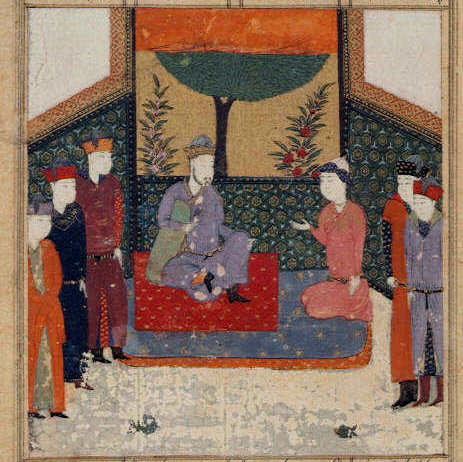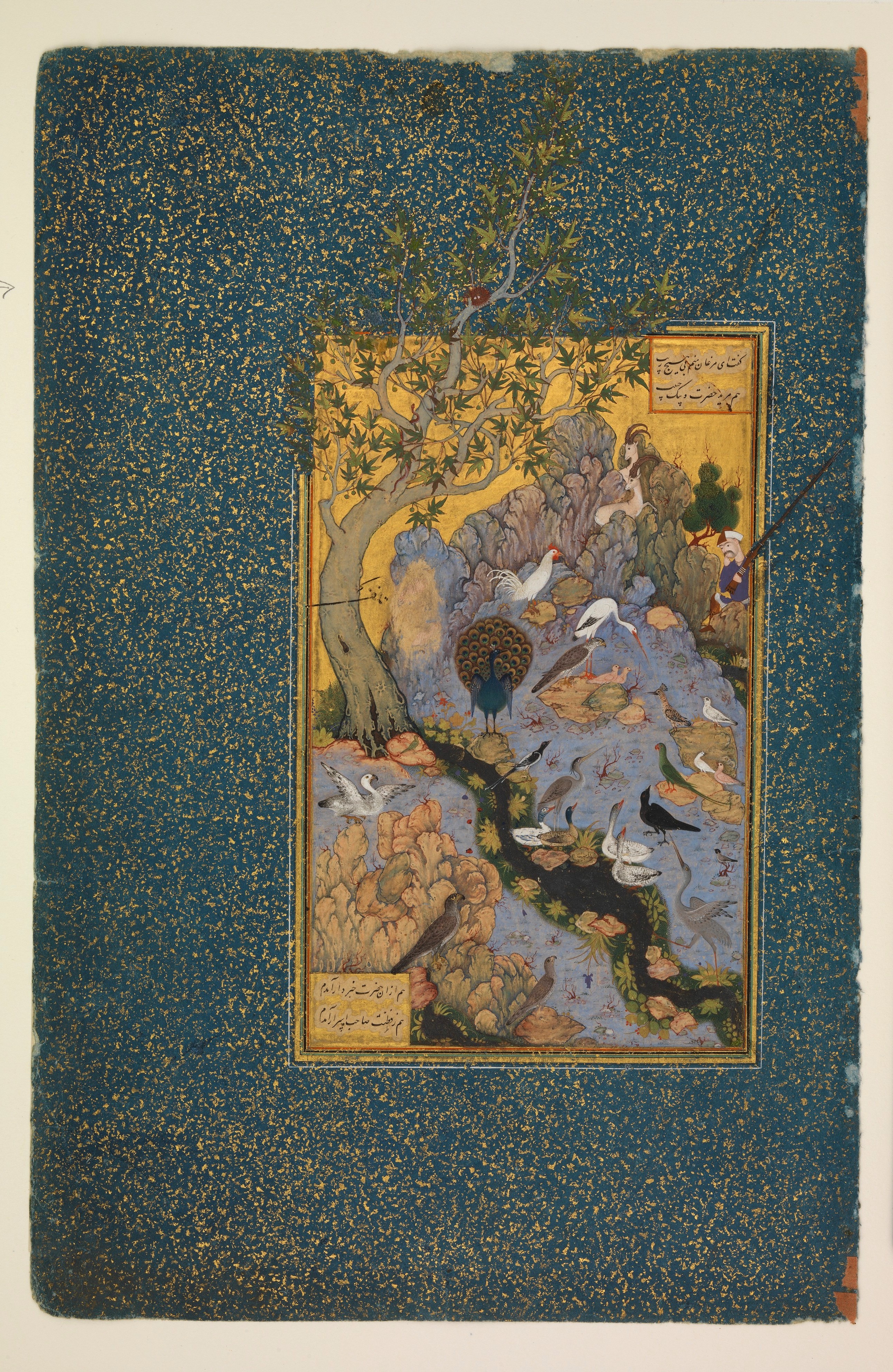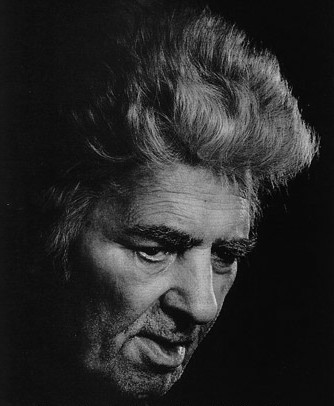|
Sanai
Hakim Abul-Majd Majdūd ibn Ādam Sanā'ī Ghaznavi ( fa, ), more commonly known as Sanai, was a Persian poet from Ghazni who lived his life in the Ghaznavid Empire which is now located in Afghanistan. He was born in 1080 and died between 1131 and 1141. Life Sanai was a Sunni Muslim. Edward G. Browne, ''A Literary History of Persia from the Earliest Times Until Firdawsh'', 543 pp., Adamant Media Corporation, 2002, , (see p.437) He was connected with the court of the Ghaznavid Bahram-shah who ruled 1117 – 1157. Works He wrote an enormous quantity of mystical verse, of which ''The Walled Garden of Truth'' or ''The Hadiqat al Haqiqa'' (حدیقه الحقیقه و شریعه الطریقه) is his master work and the first Persian mystical epic of Sufism. Dedicated to Bahram Shah, the work expresses the poet's ideas on God, love, philosophy and reason. For close to 900 years ''The Walled Garden of Truth'' has been consistently read as a classic and employed as a Sufi tex ... [...More Info...] [...Related Items...] OR: [Wikipedia] [Google] [Baidu] |
Hadiqat Al Haqiqa
Mathnawi Hadiqat al Haqiqa va Shari'at al-Tariqah ( ar, حديقة الحقيقة وشريعة الطريقة, lit=The Garden of Truth and The Path to Trek) or Elahi Nameh ( fa, الهی نامه, lit=Treatise to Theology) is an early Sufi book of poetry written in the Persian language, composed by Sanai Ghaznavi, with an Irfan theme. Sanai started composing it in the year 1130 AD (524 AH) and finished it in the year 1131 AD (525 AH). The book has ten thousand verses in ten chapters; The subjects of this book, in addition to praising Allah, the Last Prophet of Islam, his family and companions, are about intellect, knowledge, wisdom and love. The manuscripts of Hadiqat al Haqiqa have been corrected and republished by Mohammad Taghi Modarres Razavi in 1949. Another correction has been published by Mohammad Jafar Yahaghi and Mehdi Zarghani in two volumes in October 2018. Its validity Compared to other valuable works of Sanai such as his ... [...More Info...] [...Related Items...] OR: [Wikipedia] [Google] [Baidu] |
Jalaluddin Rumi
Jalāl al-Dīn Muḥammad Rūmī ( fa, جلالالدین محمد رومی), also known as Jalāl al-Dīn Muḥammad Balkhī (), Mevlânâ/Mawlānā ( fa, مولانا, lit= our master) and Mevlevî/Mawlawī ( fa, مولوی, lit= my master), but more popularly known simply as Rumi (30 September 1207 – 17 December 1273), was a 13th-century PersianRitter, H.; Bausani, A. "ḎJ̲alāl al-Dīn Rūmī b. Bahāʾ al-Dīn Sulṭān al-ʿulamāʾ Walad b. Ḥusayn b. Aḥmad Ḵh̲aṭībī." Encyclopaedia of Islam. Edited by: P. Bearman, Th. Bianquis, C.E. Bosworth, E. van Donzel and W.P. Heinrichs. Brill, 2007. Brill Online. Excerpt: "known by the sobriquet Mewlānā, persian poet and founder of the Mewlewiyya order of dervishes" poet, Hanafi faqih, Islamic scholar, Maturidi theologian and Sufi mystic originally from Greater Khorasan in Greater Iran. Rumi's influence transcends national borders and ethnic divisions: Iranians, Tajiks, Turks, Greeks, Pashtuns, other ... [...More Info...] [...Related Items...] OR: [Wikipedia] [Google] [Baidu] |
Rumi
Jalāl al-Dīn Muḥammad Rūmī ( fa, جلالالدین محمد رومی), also known as Jalāl al-Dīn Muḥammad Balkhī (), Mevlânâ/Mawlānā ( fa, مولانا, lit= our master) and Mevlevî/Mawlawī ( fa, مولوی, lit= my master), but more popularly known simply as Rumi (30 September 1207 – 17 December 1273), was a 13th-century PersianRitter, H.; Bausani, A. "ḎJ̲alāl al-Dīn Rūmī b. Bahāʾ al-Dīn Sulṭān al-ʿulamāʾ Walad b. Ḥusayn b. Aḥmad Ḵh̲aṭībī." Encyclopaedia of Islam. Edited by: P. Bearman, Th. Bianquis, C.E. Bosworth, E. van Donzel and W.P. Heinrichs. Brill, 2007. Brill Online. Excerpt: "known by the sobriquet Mewlānā, persian poet and founder of the Mewlewiyya order of dervishes" poet, Hanafi faqih, Islamic scholar, Maturidi theologian and Sufi mystic originally from Greater Khorasan in Greater Iran. Rumi's influence transcends national borders and ethnic divisions: Iranians, Tajiks, Turks, Greeks, Pashtuns, other ... [...More Info...] [...Related Items...] OR: [Wikipedia] [Google] [Baidu] |
Mohammad Taghi Modarres Razavi
Mohammad Taghi Modarres Razavi distinguished Professor of University of Tehran, was an Iranian Literary researcher and author. He was born in Mashhad, Razavi Khorasan Province, Iran on March 18, 1896, and died on November 19, 1986, in Tehran, Iran. He was one of the teachers in Astan Quds Razavi and taught there for many years like his father Mirza Mohammad Baqir Modarres Razavi. In 1927, he joined the Ministry of Culture of Iran and taught literary sciences in Mashhad and Tehran. At the beginning of the establishment of the University of Tehran, he was elected as professor and taught in the Faculty of Theology and Islamic Studies and Faculty of Letters and Humanities there until he retired. In 1976, he chosen as distinguished professor at the University of Tehran. Genealogy and life Mohammad Taghi Modarres Razavi was born in Mashhad, Razavi Khorasan Province, Iran on March 18, 1896. His last name "Modarres" (means teacher in Persian) was related to teaching posi ... [...More Info...] [...Related Items...] OR: [Wikipedia] [Google] [Baidu] |
Attar Neyshapuri
Abū Ḥamīd bin Abū Bakr Ibrāhīm (c. 1145 – c. 1221; fa, ابو حامد بن ابوبکر ابراهیم), better known by his pen-names Farīd ud-Dīn () and ʿAṭṭār of Nishapur (, Attar means apothecary), was a PersianRitter, H. (1986), “Attar”, Encyclopaedia of Islam, New Ed., vol. 1: 751-755. Excerpt: "ATTAR, FARID AL-DIN MUHAMMAD B. IBRAHIM.Persian mystical poet.Farīd al-Dīn ʿAṭṭār, in Encyclopædia Britannica, online edition - accessed December 2012./ref> poet, theoretician of Sufism, and hagiographer from Nishapur who had an immense and lasting influence on Persian poetry and Sufism. He wrote a collection of lyrical poems and number of long poems in the philosophical tradition of Islamic mysticism, as well as a prose work with biographies and sayings of famous Muslim mystics. Manṭiq-uṭ-Ṭayr (''The Conference of the Birds)'' and '' Ilāhī-Nāma'' (''The Book of Divine)'' and Memorial of the Saints are among his best known works. Biogra ... [...More Info...] [...Related Items...] OR: [Wikipedia] [Google] [Baidu] |
Nizami Ganjavi
Nizami Ganjavi ( fa, نظامی گنجوی, lit=Niẓāmī of Ganja, translit=Niẓāmī Ganjavī; c. 1141–1209), Nizami Ganje'i, Nizami, or Nezāmi, whose formal name was ''Jamal ad-Dīn Abū Muḥammad Ilyās ibn-Yūsuf ibn-Zakkī'',Mo'in, Muhammad(2006), "Tahlil-i Haft Paykar-i Nezami", Tehran.: p. 2: Some commentators have mentioned his name as “Ilyas the son of Yusuf the son of Zakki the son of Mua’yyad” while others have mentioned that Mu’ayyad is a title for Zakki. Mohammad Moin, rejects the first interpretation claiming that if it were to mean 'Zakki son of Muayyad' it should have been read as 'Zakki i Muayyad' where izafe (-i-) shows the son-parent relationship but here it is 'Zakki Muayyad' and Zakki ends in silence/stop and there is no izafe (-i-). Some may argue that izafe is dropped due to meter constraints but dropping parenthood izafe is very strange and rare. So it is possible that Muayyad was a sobriquet for Zaki or part of his name (like Muayyad al- ... [...More Info...] [...Related Items...] OR: [Wikipedia] [Google] [Baidu] |
Attar Of Nishapur
Abū Ḥamīd bin Abū Bakr Ibrāhīm (c. 1145 – c. 1221; fa, ابو حامد بن ابوبکر ابراهیم), better known by his pen-names Farīd ud-Dīn () and ʿAṭṭār of Nishapur (, Attar means apothecary), was a PersianRitter, H. (1986), “Attar”, Encyclopaedia of Islam, New Ed., vol. 1: 751-755. Excerpt: "ATTAR, FARID AL-DIN MUHAMMAD B. IBRAHIM.Persian mystical poet.Farīd al-Dīn ʿAṭṭār, in Encyclopædia Britannica, online edition - accessed December 2012./ref> poet, theoretician of Sufism, and hagiographer from Nishapur who had an immense and lasting influence on Persian poetry and Sufism. He wrote a collection of lyrical poems and number of long poems in the philosophical tradition of Islamic mysticism, as well as a prose work with biographies and sayings of famous Muslim mystics. Manṭiq-uṭ-Ṭayr (''The Conference of the Birds)'' and ''Ilāhī-Nāma'' (''The Book of Divine)'' and Memorial of the Saints are among his best known works. Biography ... [...More Info...] [...Related Items...] OR: [Wikipedia] [Google] [Baidu] |
Ghazni
Ghazni ( prs, غزنی, ps, غزني), historically known as Ghaznain () or Ghazna (), also transliterated as Ghuznee, and anciently known as Alexandria in Opiana ( gr, Αλεξάνδρεια Ωπιανή), is a city in southeastern Afghanistan with a population of around 190,000 people. The city is strategically located along Highway 1, which has served as the main road between Kabul and Kandahar for thousands of years. Situated on a plateau at 2,219 metres (7,280 ft) above sea level, the city is south of Kabul and is the capital of Ghazni Province. Ghazni Citadel, the Minarets of Ghazni, the Palace of Sultan Mas'ud III, and several other cultural heritage sites have brought travelers and archeologists to the city for centuries. During the pre-Islamic period, the area was inhabited by various tribes who practiced different religions including Zoroastrianism, Buddhism and Hinduism. Arab Muslims introduced Islam to Ghazni in the 7th century and were followed in the ... [...More Info...] [...Related Items...] OR: [Wikipedia] [Google] [Baidu] |
List Of Persian Poets And Authors
The list is not comprehensive, but is continuously being expanded and includes Persian writers and poets from Iran, Afghanistan, Azerbaijan, Bangladesh, India, Tajikistan, Uzbekistan, and Turkmenistan. This list is alphabetized by chronological order. Although a few authors in this list do not have their ethnic origin, nevertheless they have enriched Persian culture and civilization by their remarkable contributions to the rich Persian literature. The modern Persian speaker comprehends the literature of the earliest Persian poets including founder of the Persian poetry and literature Rudaki (approximately 1150 years ago) all the way down to the works of modern Persian poets. Some names that lived during the turn of a century appear twice. From the 7th to the 8th centuries * Abu'l-Abbas Marwazi 9th century * Rudaki (رودکی) * Muhammad al-Bukhari Persian Islamic Scholar, (810 - 870) * Mansur Al-Hallaj (منصور حلاج) * Shahid Balkhi (ابوالحسن شهيدبن ح ... [...More Info...] [...Related Items...] OR: [Wikipedia] [Google] [Baidu] |
John Stephenson (zoologist)
John Stephenson CIE FRS FRSE FRCS (6 February 1871, in Padiham, Lancashire – 2 February 1933, in London) was a surgeon and zoologist. He was a leading expert on the earthworms of the Indian subcontinent and served as editor of the ''Fauna of British India'' series from 1927. Knowledgeable in Persian, Hindustani and some Arabic, he was also an orientalist scholar and translated several works from Persian to English. Life Stephenson was born in Padiham and was education at Burnley Grammar School, matriculated from Owen's College, Manchester and graduated there with a B.Sc. (Lond.) in 1890 and M.B., B.Chir. (Manc.) in 1893. Stephenson was a house physician from 1893 to 1894 at the Manchester Royal Infirmary and then in 1894 at the Royal Hospital for Diseases of the Chest, London. He had also studied zoology under A. Milnes Marshall. He joined the Indian Medical Service as a lieutenant on 29 July 1895. He became captain on 29 July 1898, major on 29 January 1907, and lieutenant ... [...More Info...] [...Related Items...] OR: [Wikipedia] [Google] [Baidu] |
Persian Literature
Persian literature ( fa, ادبیات فارسی, Adabiyâte fârsi, ) comprises oral compositions and written texts in the Persian language and is one of the world's oldest literatures. It spans over two-and-a-half millennia. Its sources have been within Greater Iran including present-day Iran, Iraq, Afghanistan, the Caucasus, and Turkey, regions of Central Asia (such as Tajikistan) and South Asia where the Persian language has historically been either the native or official language. For example, Rumi, one of the best-loved Persian poets, born in Balkh (in modern-day Afghanistan) or Wakhsh (in modern-day Tajikistan), wrote in Persian and lived in Konya (in modern-day Turkey), at that time the capital of the Seljuks in Anatolia. The Ghaznavids conquered large territories in Central and South Asia and adopted Persian as their court language. There is thus Persian literature from Iran, Mesopotamia, Azerbaijan, the wider Caucasus, Turkey, Pakistan, Bangladesh, India, Taji ... [...More Info...] [...Related Items...] OR: [Wikipedia] [Google] [Baidu] |
Afghanistan
Afghanistan, officially the Islamic Emirate of Afghanistan,; prs, امارت اسلامی افغانستان is a landlocked country located at the crossroads of Central Asia and South Asia. Referred to as the Heart of Asia, it is bordered by Pakistan to the east and south, Iran to the west, Turkmenistan to the northwest, Uzbekistan to the north, Tajikistan to the northeast, and China to the northeast and east. Occupying of land, the country is predominantly mountainous with plains in the north and the southwest, which are separated by the Hindu Kush mountain range. , its population is 40.2 million (officially estimated to be 32.9 million), composed mostly of ethnic Pashtuns, Tajiks, Hazaras, and Uzbeks. Kabul is the country's largest city and serves as its capital. Human habitation in Afghanistan dates back to the Middle Paleolithic era, and the country's strategic location along the historic Silk Road has led it to being described, picturesquely, as the ‘rounda ... [...More Info...] [...Related Items...] OR: [Wikipedia] [Google] [Baidu] |








